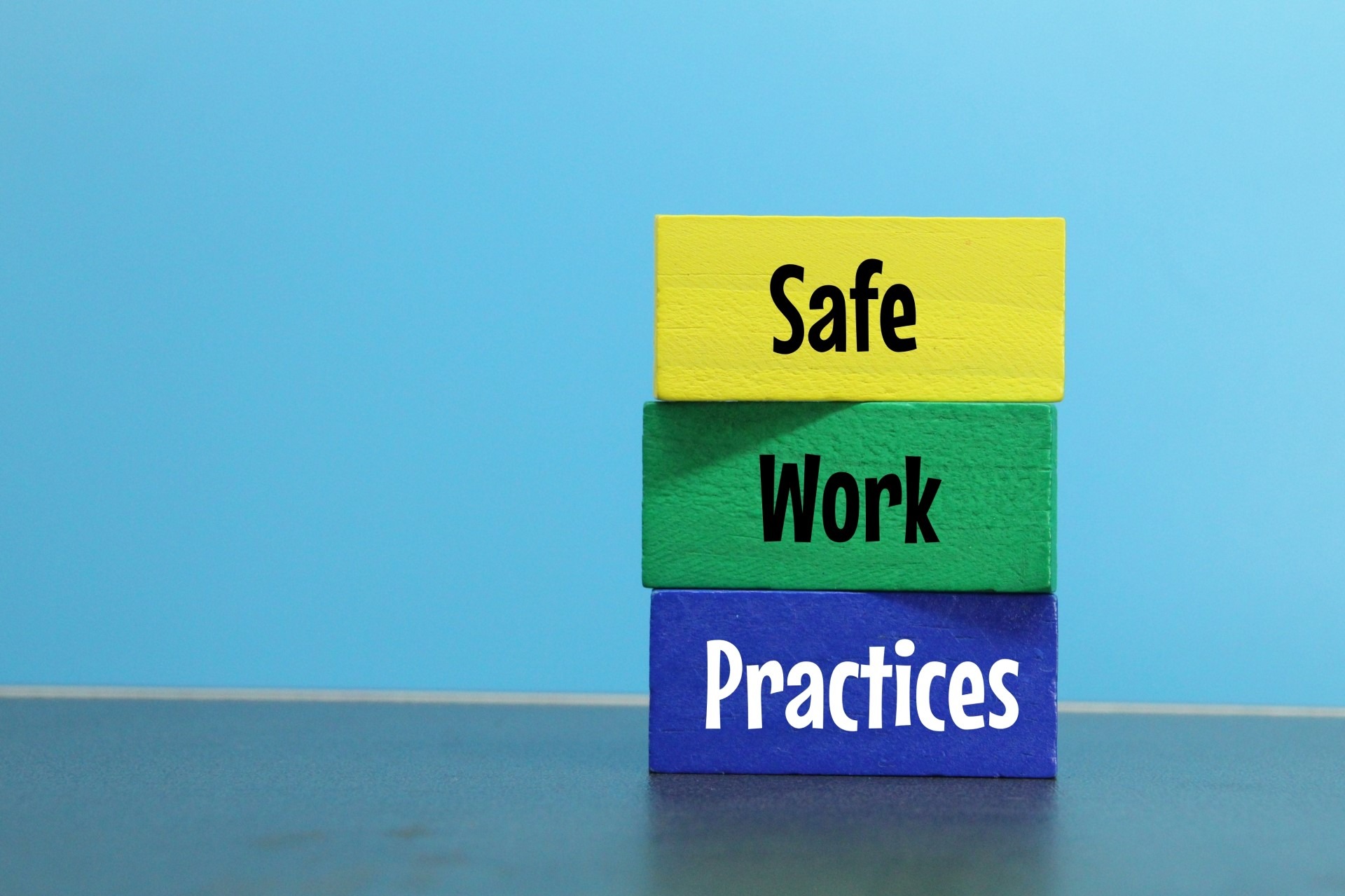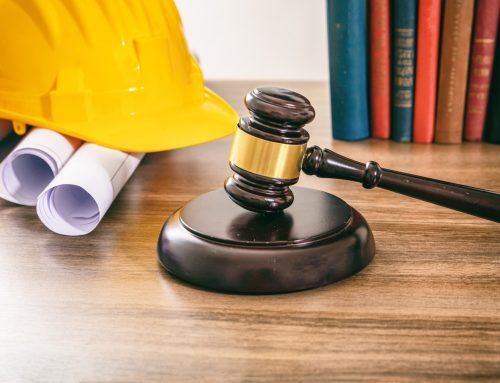One of the biggest concerns in the construction industry is asbestos as it is so hard to identify and can be so deadly. If a person isn’t careful then generally the only time, they may find out that they’ve been exposed to asbestos is with a diagnosis of asbestosis, mesothelioma, and/or lung cancer.
This Managing Asbestos in the Workplace blog has been created with the intention to inform and educate all persons (either in the workplace or in a residential property) of asbestos, the risks associated, and how to best prepare oneself should a situation occur.
Finding out if your building contains asbestos – (How do I know if I have asbestos)?
Initially identifying whether you may be at risk of exposure to Asbestos Containing Materials (ACM) is the most difficult part when it comes to managing your risk because how can a person control a hazard if it’s invisible?
There are multiple steps that a person can take but the very first thing that management or a property owner can do is identify the age of the building and when it was built. Doing so will help to highlight the chances that ACM’s were used during its construction or when renovations were taking place. There are three main periods of time that are important;
- Before the mid-1980’s – if the building was constructed or had renovations completed before the mid-1980’s then it is highly likely that it has ACM’s,
- Between mid-1980’s and 1990 – if the building was constructed or had renovations completed between the mid-1980s and 1990 then it is likely that it has ACM’s,
- After 1990 – if the building was constructed or had renovations completed after 1990 then it is unlikely to have ACM’s (Victoria State Government, 2019a).
Once the age of the building has been established, the next thing to look out for and consider is where the asbestos may be located.
When trying to locate asbestos in the workplace there are 5 key areas to check:
- Exterior – in walls, at the electricity meter and fuse box, molded vents, window and door moldings, window rope and putty
- Plant and Boiler rooms – in the rooms themselves, fire doors, flues, gaskets, lagging around pipes, and switchboards
- Kitchens – walls, ceilings, and splashbacks
- Roof –surfaces, downpipes, eves, and flue exhausts
- Bathrooms –walls, toilets, ceilings, and floors
When trying to locate asbestos in a residential property there are 6 areas where asbestos can be found. These are:
- Exterior – roof sheeting, gutters, downpipes, ridge capping, imitation brick cladding, and lining under eaves
- Bathrooms, toilets, and laundries – wall and ceiling panels, vinyl floor tiles and backing for wall tiles
- Kitchens – wall and ceiling panels, backing for splashbacks, vinyl floor tiles, backing of vinyl flooring and insulation in stoves
- Living areas – wall and ceiling panels, carpet underlay and insulation in domestic heaters
- Backyard – fences, garden sheds, garages, carports, outdoor toilets, dog kennels, buried and dumped waste materials
- Other areas – such as in the backing of electrical switchboards, insulation in roof cavities, hot water pipe insulation, textured paint, and plaster patching compounds (Victorian State Government, 2021; QBCC, 2021)
https://www.asbestos.vic.gov.au/sites/default/files/2022-01/ISBN-LVAT-fact-sheet-tradies-2022-01.pdf
Once your building is deemed as having the possibility of containing ACM’s, the next step is to confirm that there is in fact asbestos on location. The only way to do this is by scientific testing of a sample. The laboratory must be NATA accredited to perform asbestos identification analysis.
Once tested, asbestos can come back as either friable or non-friable. Friable is where asbestos is used as lagging or insulation and in this form can easily give off dust. Non-friable is when asbestos is mixed with other materials (such as cement) and is less prone to breaking in this state (Murdoch University, 2022).
Residential Maintenance
When conducting works on residential properties, it is important to identify if you as a contractor are engaged to perform any demolition or refurbishment work at domestic premises, it becomes your workplace and you are therefore responsible for identifying if asbestos is likely to be disturbed whilst under your management/control (Victoria State Government, 2019b).
Obtaining scientific testing on a sample can be costly, in both time and money. The Code of Practice on ‘How to manage and control asbestos in the identifies that there is an alternative. This code of practice states:
“If there is uncertainty as to whether asbestos is present in any part of a structure or plant, the person with management or control of the workplace can either assume asbestos is present and treat it with appropriate caution based on the level of risk or have a sample analysed. If it is assumed to be asbestos, there is no need to take a sample for analysis.” (Worksafe Queensland, 2022)
Assuming that the material contains asbestos means that it can remain undisturbed. The Code of Practice also states that the only time when it can be assumed that no asbestos is present is if this assumption is based on reasonable grounds, such as:
- the workplace being constructed post-1990 and there is no plant or equipment made before 31 December 2003
- the building being constructed (including the roof) wholly of metal, brick or concrete, and where no internal walls are made of fibro, gyprock or similar cladding, for instance a corrugated iron shed or a Colorbond® type warehouse building constructed of double brick with bare brick internally. Flooring (vinyl tiles), switchboards and under-eaves lining should also be considered
- where a register indicates that all the identified and assumed asbestos has been removed.
If it is assumed that asbestos is present on location, then all requirements for managing asbestos in the workplace must be followed until the material is removed or testing has confirmed that it either does or does not contain asbestos. In this assumption, it is also important to keep an asbestos register that includes all presumptions made on location with a simple statement such as ‘Roof sheeting is presumed to contain asbestos’ or ‘All underground conduits are presumed to contain asbestos.’
Unlike commercial properties, residential properties are not required to keep a record of the locations that have asbestos in the building. As a resident, if you find out that your home has asbestos you have 2 options; remove the asbestos or keep it and inform anyone who comes to do work on your property (ASEA, 2022).
Removing Asbestos from the Workplace – (If I have asbestos do I need to get it removed?)
Finding that your home or workplace is made from ACM products does not mean your health is at risk. Studies have shown that when asbestos is in sound condition and left undisturbed, it is not a significant health risk. If the asbestos fibres remain firmly bound i.e., not exposed, or damaged generally you do not need to remove the ACM (NSW Government, 2017).
When looking to remove asbestos from your home or workplace, it is highly recommended to have it removed by a licensed and appropriately trained asbestos removalist. Asbestos removal licences have two different classes; A and B. Class A licences allow for the removal of both friable and non-friable asbestos materials while a Class B license only allows for the removal of non-friable (bonded) asbestos materials.
Asbestos training is required when you are removing small amounts of asbestos. This training will help with identification, safe handling, and containing of asbestos. If you have received asbestos awareness training, then you can individually remove small amounts so long as:
- there is no more than 10 square metres of non-friable asbestos
- the removal of asbestos contaminated dust takes no more than 10 minutes
- no more than 1 hour of asbestos removal takes place in a 7-day period
https://www.asbestos.vic.gov.au/sites/default/files/2022-01/ISBN-LVAT-fact-sheet-tradies-2022-01.pdf
What to do if you’re exposed?
If you do not follow the correct risk management processes, then you greatly increase your chances of exposure to asbestos. Often there is a long lag time between exposure to asbestos fibres and developing an asbestos-related disease. However, not everyone who is exposed to asbestos fibres will develop an asbestos-related disease.
The Australian Government created the National Asbestos Exposure Register (NAER) to record information for members of the community who may have been exposed to asbestos, for their future reference. The NAER is a voluntary, privacy-protected register for anyone who believes they may have been exposed to asbestos – whether at work, in the home or in the community. This data is stored securely and can be accessed by the individual in the future if they need to recall the exposure event.
in addition to recording your details on the NAER, we recommend that you take the following steps as outlined below, depending on where your exposure took place:
If the suspected exposure took place in the workplace:
- contact your employer, who should take immediate action to remove the ongoing risk; or your state or territory work health and safety regulator if that does not occur.
If the suspected exposure took place outside the workplace (home or community):
- contact your local council or state or territory environmental regulator for advice on how to ensure the asbestos fibres pose no ongoing risk to yourself or to others.
You could also arrange an appointment with your GP to discuss the associated health risks and request advice regarding any health assessments that your GP considers appropriate.
Contact Bramwell Today!
Bramwell Partners provides WHS consulting services and can assist you with the development and implementation of an Asbestos Management Plan, Asbestos Management Policy & Procedures, Safe Work Method Statement for Working with Asbestos and other safety documentation. Call us on 07 3630 5695 or reach out to us using our contact page for more information.
References
ASEA. (2022). Asbestos in the workplace. Retrieved 2 October 2022, from https://www.asbestossafety.gov.au/find-out-about-asbestos/asbestos-workplace
Murdoch University. (2022). Friable and non friable. Retrieved 1 October 2022, from https://www.australianasbestosnetwork.org.au/asbestos-today/diy-renovators-guide/friable-non-friable/
NSW Government. (2017). Asbestos and health risks – Fact sheets. Retrieved 2 October 2022, from https://www.health.nsw.gov.au/environment/factsheets/Pages/asbestos-and-health-risks.aspx
QBCC. (2021). Asbestos finder. Retrieved 2 October 2022, from https://www.qbcc.qld.gov.au/resources/tool/asbestos-finder
Victoria State Government. (2019). Find and Identify Asbestos In The Home. Retrieved 1 October 2022, from https://www.asbestos.vic.gov.au/about-asbestos/finding-and-identifying/find-and-identify-asbestos-tool/find-and-identify-asbestos-in-the-home?place=home&room=bathroom
Victoria State Government. (2019). Working In Domestic Residences and Commercial Workplaces. Retrieved 2 October 2022, from https://www.asbestos.vic.gov.au/builders-and-trades/find-identify-remove-dispose
Victorian State Government. (2021). Find and identify asbestos tool | asbestos.vic.gov.au. Retrieved 1 October 2022, from https://www.asbestos.vic.gov.au/about-asbestos/finding-and-identifying/find-and-identify-asbestos-tool?place=workplace
Worksafe Queensland. (2022). Codes of practice. Retrieved 2 October 2022, from https://www.worksafe.qld.gov.au/laws-and-compliance/codes-of-practice







